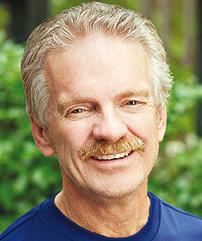Sports Medicine Corner

If you have even the remotest interest in sport sciences, I’ve got a new book for you.
David Epstein, a senior writer for Sports Illustrated, presents some pretty complex topics in the very readable “The Sports Gene” where he explores the concepts behind whether there is a genetic predisposition for sport (nature) or is it about development (nuture).
The eternal nature vs. nurture debate – are champions made or are they born.
Consider Some Examples
Major league baseball players play softball in an annual fundraiser during the off-season. With the American League down 9-1, the sponsors send out a ringer – USA Gold Medal pitcher Jennie Fitch. Her defense sat down at their positions.
She faces Albert Pujols; four pitches, one ball and three swinging strikes. Two more go down swinging. Weeks later with no fans or media, she blew right by Barry Bonds. Alex Rodriguez refused to face her.
Why? Fitch’s pitching genes? Those[show_disconnected][show_to accesslevel=’Subscriber’] MLBers have this massive library of ‘game film’ of pitchers in their head: the arm’s cycle, ball release, spin, etc. to predict where the ball will cross the plate and when and where to swing the bat.
They had no ‘film’ on Fitch’s underhand delivery of a ball with no visible seams (so they couldn’t see the spin) delivered at 65 mph from 43 feet vs. 60.5 feet. Against Fitch, they were just like us.
But were the pros born with the tools to catalogue pitching? Or did they develop some unique visual skill that we all have that led to baseball success? Or was it that infamous (and overhyped) 10,000 hour rule? That says it takes 10 years and 10,000 hours of concentrated practice to become an elite athlete.
Baseball, tennis, volleyball, cricket players have learned to identify the flight of a ball in milliseconds. And that’s not reaction time. Elite team sport players not only can identify the flight of a ball in a heartbeat, they can also reconstruct the players on the field with only a glance. No one’s born with that. Score one for nuture.
Don’t put too much faith in that 10,000 hour rule. That number came from interviews with a grand total of 10 violin prodigies. Australia took good female athletes and within two years, turned out world class skeleton competitors (a winter Olympic sport).
There are a lot of similar examples. The most visible? Usain Bolt wanted to be a cricket player until a track coach noticed his speed, which most all soccer coaches know you really can’t teach.
Couple years later, well you know that story. Score one for nature.
And most of those fast Jamaicans and tireless Kenyans didn’t grow up running for sport. They grew up running for transportation. Sure, there are plenty of tireless Germans. The genes didn’t leave them. The culture did. Minus one for nuture.
What You May Not Know
Here’s something about speed you probably didn’t know. We all plateau eventually. And the younger an athlete starts training for speed, the earlier they plateau.
There’s no guarantee that kid who sizzles in 8th grade will continue to get faster all the way through college. More likely, that kid may have already peaked. Score one against early specialization
But speed kills, right? And speed is all about fast twitch muscle fibers, right? Danish researchers have noticed that the fastest players have the most chronic injuries and many never make the first team. Looks like the fast twitch player can’t tolerate training like everyone else.
Athletes each have a unique genotype. Wouldn’t that suggest unique training environments? Score one for individualized training. One size training does not fit all athletes.
You also can’t train body type, especially height. The average height for the NBA is 6’6″. Do you think that the distribution of NBA height is similar with the population? Hardly. Score one for nature.
More on body type. Normal wingspan is (roughly) your height. NBA wingspan is well beyond their height. Actually, having a wingspan greater than their height is more important in the NBA than height alone.
The leg length in runners is a greater proportion of the runner’s height than the population. The pelvis is narrower (males and females), and the leg muscle mass is less in long distance runners than the population. Score one for nature. And for distance runners, the less muscle mass in the legs contributes to being more efficient after training. Score more for nuture.
The Search For Superman (Woman)
Geneticists have been crawling all over the world looking for the genes that explain the Jamaican sprinters, the East African distance runners, those with hypertrophic cardiomyopathy (main reason athletes die in sport) –
[/show_to][hide_from accesslevel=’Subscriber’]
Your subscription has expired please
Subscribe to Southern Soccer Scene to view full article and get all the news in your mailbox![/hide_from]
